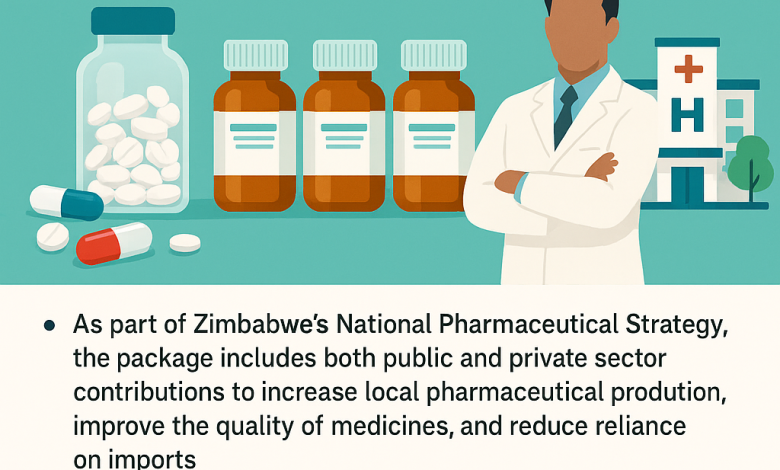$45 Million Boost to Zimbabwe’s Health Sector Spurs Pharmaceutical Revival

Byline: Online News Desk | 8 July 2025
Harare – Zimbabwe’s health sector is poised for a major transformation following a $45 million investment package aimed at revitalizing the country’s pharmaceutical industry. This strategic intervention comes in the wake of President Emmerson Mnangagwa’s recent unannounced visits to health institutions, which exposed critical gaps and prompted immediate government action.
The new funding, drawn from both public and private sector contributions, is being channelled through the Pharmaceutical Sector Revitalization Fund, under the auspices of the Ministry of Industry and Commerce.
Strengthening Local Medicine Production
As part of the National Pharmaceutical Strategy, the $45 million will:
- Increase local pharmaceutical production to 60%,
- Improve the quality and safety of medicines,
- Enhance the competitiveness of local pharmaceutical firms,
- Promote exports while reducing reliance on expensive imports.
This strategy is anchored on President Mnangagwa’s broader vision for industrialization and health sovereignty, aligning with National Development Strategy 1 (NDS1) and the country’s long-term development plan, Vision 2030.
Pharmaceutical Infrastructure and Skills Development
The revitalization fund will be used to:
- Upgrade pharmaceutical manufacturing infrastructure,
- Modernize production technology,
- Provide skills training to boost local capacity,
- Ensure a steady supply of essential medicines across Zimbabwe’s clinics and hospitals.
This is expected to reduce stockouts and improve treatment options, particularly in rural and underserved areas.
Expanding Access to Primary Healthcare
Complementing the pharmaceutical investments is a wider push to improve primary healthcare infrastructure. The Government is working to establish at least one clinic per ward, ensuring communities, especially in rural areas, have easier access to medical services.
Recent Milestones:
- Chirape Clinic in Gokwe now serves multiple surrounding villages,
- New clinics in Murehwa and Uzumba have shortened travel distances for thousands,
- Upgrades at district hospitals include solar energy systems, emergency services, and maternity facilities.
These developments are playing a key role in maternal health, immunizations, and chronic illness management, contributing to a decline in maternal mortality.
Integrated Development: Health, Education & Infrastructure
The health investments are complemented by advances in the education sector, where new schools are being built to ensure no child walks more than 5km to attend school. This initiative improves child safety and indirectly boosts public health outcomes.
Vision 2030 in Action
The comprehensive approach to healthcare and infrastructure development reaffirms the Government’s resolve to uplift the quality of life for all citizens.
“This is not just about medication or clinics,” said a Ministry of Health official. “It’s about building a self-sufficient healthcare system, reducing preventable deaths, and laying the foundation for a prosperous, healthy nation.”
Zimbabwe’s progress in this sector is a testament to the mantra: Nyika inovakwa nevene vayo / Ilizwe lakhiwa ngabanikazi balo — a country is built by its citizens.




